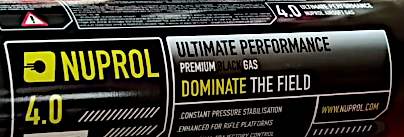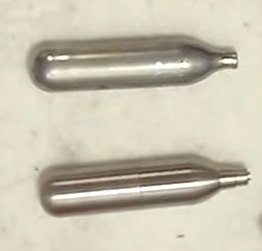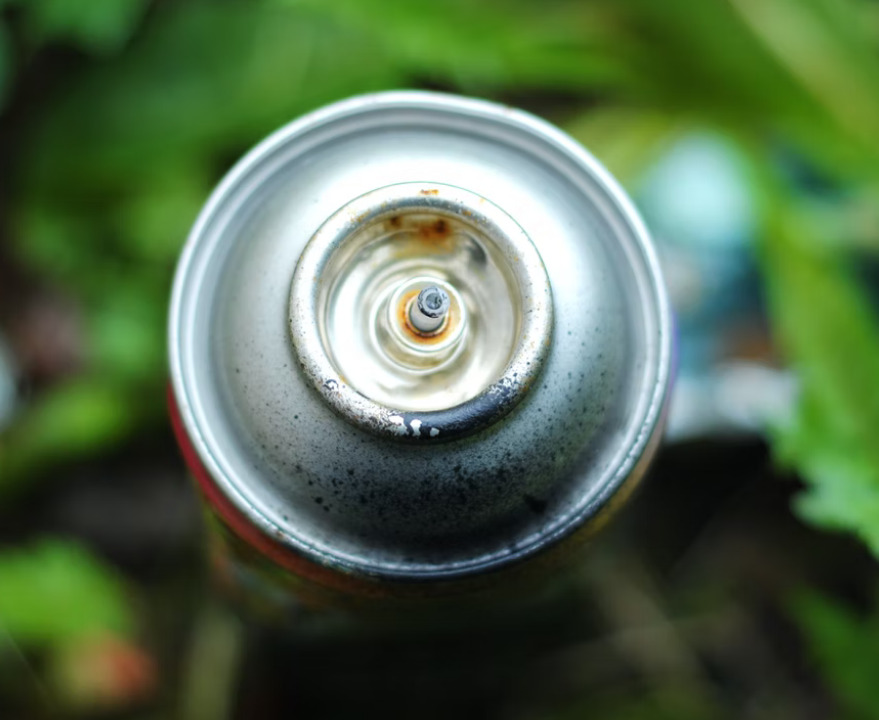For many airsofters, realism and feel is a high priority and a big reason behind their purchases.
Although AEGs are usually great performance-wise, delivering a longer, more constant stream of BBs at your opponents, many airsoft enthusiasts simply find that they don’t cut it when it comes to delivering an authentic feel.
When firing a real steel firearm, there is recoil and blowback caused by low explosive propellants and expanding gases that make it a memorable physical experience that can be difficult to replicate with electric motors and hop up units.
Short of using an actual firearm, using a gas blowback airsoft gun can really be your best bet for achieving the most true to life experience in airsoft.
One thing that tends to confuse newcomers to the blowback world is the various different types of gas available.
After all, the differences between green, red, black and CO2 gases can be a bit esoteric and subtle, yet their effects on gameplay and GBB guns are anything but.
To help out, we’ve created this brief guide to the most common airsoft gases out there and the considerations in using them.
How do gas blowback airsoft guns work?
Before diving straight into airsoft gases, let’s take a moment to explore how the guns that use them work.
Essentially, gas operated airsoft guns work by storing pressurized gas of some kind in a magazine containing BBs.
As the trigger is pulled, the airsoft gun’s hammer opens the valve release in the gas-filled pressurized magazine slightly, which allows some of the gas to escape and fire any loaded BB out of the chamber.
At the same time, the gas pushes a piston attached to the slide, moving the slide back and creating a realistic blowback action.
The escaping gas then interacts with various internal components, resetting the gun and getting it ready to fire again.
This action is best demonstrated in the following video:
Alright, Let’s Talk Gas: Green Gas Vs Red Gas Vs Black Gas Vs CO2
What is green gas?
| Pros | Cons |
| Usually premixed with silicone oil, less lubrication required, good for seals & rubber | More noticeable drop in performance in cold temperatures |
| Reliable performance | Lower pressure, lower FPS |
| Allows you to top off magazines on the go if in a can | Silicone lube can get a little messy, can affect some internals if not careful |
| Less wear and tear on airsoft guns | Have to buy full can, greater upfront cost |
Green gas is a type of gas most commonly used in airsoft as a propellant for gas blowback guns.
It is essentially pressurized propane gas that is mixed with lubricating silicone oil (sometimes) and without the characteristic mercaptan that is typically added to propane that gives it its distinctive “rotten egg” smell, making green gas odorless.
Although most green gas is pure propane with a little silicon oil, on occasion, some manufacturers also add isobutane to the mix, which can add slightly better cold weather performance.

This mixture can also offer slightly better pressure consistency at a slight cost of overall pressure and performance, which is something to be aware of and consider when looking at airsoft green gas options.
Green gas, as you might expect from propane, is non-toxic and flammable but safe to use if properly stored, cared for and handled correctly.
It is commonly sold in single largish cans (8-12 oz is not uncommon) and gas is fed directly into the magazine, yielding up to about 1000 shots or so depending on weather, leaks, the airsoft gun and/or your shooting, making it fairly affordable as far as dollars per shot goes.
In terms of gas pressure, green gas will usually fall within 115-130 psi range, depending on the surrounding temperature, with most users reporting somewhere around 120 at room temperature (72°F or 22.2°C).
Although it doesn’t offer quite as much kick and blowback as higher pressure gases, this lower pressure range makes green gas fairly easy on most gas blowback airsoft guns, producing less wear and tear in the long run on the internals.
Similarly, its lower FPS output makes it a good jack of all trades gas for airsoft games, being unlikely to exceed any field FPS limits and being easily down tuned in case if it does.
What is red gas?
| Pros | Cons |
| Higher pressure, higher FPS than green gas | Increased wear and tear on airsoft over green gas |
| Does better in colder temperatures than green gas | Harder to find, more expensive |
Back in the day, red gas referred to pressurized freon (dichlorodifluoromethane, or CFC-12), which delivered substantially more of a punch than what is on the market today.
It was also highly destructive to the environment, slowly putting holes in the ozone layer much as it put holes in your opponent’s pride.
Today, however, like all CFCs covered in the Montreal Protocol it is banned for sale and what is referred to as red gas is really a more pressurized variant of green gas.
Having a PSI range of anywhere from 130 to 190 or more, red gas can deliver more of a punch than traditional green gas, firing off BBs with a higher FPS at the cost of a little more strain to the airsoft guns internal mechanisms and more wear and tear over time.
Due to its higher pressurization, red gas performs a little better than traditional green gas in cold weather.
It is also usually a little harder to find and commands a higher price accordingly.
What is black gas?
| Pros | Cons |
| High performance gas -, higher FPS than red or green gas | Increased wear and tear on airsoft over red or green gas |
| Does better in colder temperatures than either red or green gas | Can damage non-metal airsoft guns and internals |
| Harder to find than either green or red gas |
The most pressurized version of green gas is rather affectionately known as black gas.
With PSIs over 200, black gas certainly packs the most punch and sends off BBs at FPS rates that will certainly leave a mark and is the best all around propane-based option for cold weather gas blowback airsoft performance.

That said, commiserate with its performance, prolonged use of black gas tends to have the most wear and tear on airsoft guns, to the point where it can damage non-metal airsoft guns and cheaper internals, leaving users to work out the cost-benefit for themselves.
And, because it is even less common than red gas, it tends to be the hardest to find and most expensive of the propane airsoft gas options
What about straight propane?
| Pros | Cons |
| More widely available and cheaper than green gas | No lubrication means higher maintenance requirements than mixed green gas |
| No silicon oil for those who don’t like it | Requires adaptor in most cases |
| Slightly higher FPS and pressure than mixed green gas | Can have an annoying, eggy smell to it |
| Slightly better performance in cold weather than mixed green gas | Slightly more wear and tear than mixed green gas |
Since green gas is essentially propane, which is commonly available in most markets and usually fairly cheap, many airsofters have begun using straight propane instead of green gas.
Usually this requires an adapter, but it can work.
Propane canisters are considered “drier” than green gas ones, as they don’t contain silicon oil as a lubricant.
This has advantages and disadvantages to it.
Without oil droplets taking up space in the canisters, the gas can be pressurized to a slightly higher degree, which means slightly higher performance in terms of FPS and in cold weather conditions and very slightly higher wear and tear accordingly.
However it does mean that users will have to more frequently lube their airsoft guns on their own, although some users prefer this, preferring to use grease or wanting more control over the distribution of lubricant, keeping it away from the hop up unit, for example.
One thing that users should note before they rush in and receive an unpleasant surprise is that propane is usually sold with ethyl mercaptan added to it so that users can detect leaks. This produces a distinct, rotten egg smell that can attract some wrinkled noses and offhand comments about the user and their diet on the field.
CO2 and airsoft
| Pros | Cons |
| Highest FPS, hardest hitting | Can be more expensive than green gas shot for shot |
| Harder, snappier blowback | Can damage internal mechanisms on cheaper guns |
| Comes in convenient, easy to load 12g capsules | Requires frequent lubrication |
| Less affected by cold weather than green gas |
The big daddy of airsoft gases and GBBs, CO2 is a highly pressurized option that usually requires specialized airsoft guns as it is capable of delivering a very high FPS.
CO2 is widely considered by users who live in cold climates, as their high pressure means they tend to hold their performance in cold weather far better than green gas and its variants.
CO2 is most sought out, however, due to its higher pressure and resulting FPS.
When fitted to the right airsoft gun they can deliver enough of a punch to make your opponents regret stepping onto an airsoft field.
This high pressurization also means that GBBs running CO2 tend to give a more pleasing and realistic “kick.”
Unlike green gas cans, CO2 tends to come in smaller, individual capsules (good for 30-200 shots or so), which means they are easier to handle and parcel out over a game,

Unfortunately it also means that users can’t top up their magazines on the fly as they can with a green gas can.
That said, being so pressurized can have its drawbacks.
Many airsoft fields (CQB games for example) have limits on FPS to prevent injury, and finding a CO2 airsoft gun that consistently fires under 350 FPS without relying on questionable tricks can be a challenge.
Adding to this CO2 has something of a reputation in the airsoft community already and so users may attract unwanted attention from refs.
In addition, CO2 pressurization can easily damage many airsoft guns or their internal mechanisms, so users usually needing to seek out CO2-friendly airsoft guns and they may need to do more frequent maintenance and lubrication.
Finally, although you can usually buy CO2 cartridges for less than you would pay for a can of green gas, generally speaking you can usually get more shots out of the green gas than you might with CO2 cartridges, which makes CO2, on average, more expensive shot for shot than green gas.
Factors to consider when choosing gases for airsoft
Pressure, FPS vs Limits and Wear and Tear
All else being equal, a gas that’s capable of being pressurized to a higher PSI will fire off BBS at a higher velocity, yielding a greater FPS from your airsoft gun.
That said, higher pressure gases, while yielding sometimes significant performance advantages, will often cause more wear and tear on an airsoft gun’s internal mechanisms due to increased force, impact and temperature.
Some guns (particularly those built with less durable plastics) simply can’t handle higher pressure gas and can suffer catastrophic failure.
Restrictions, game limits and other players
Another thing to consider when selecting a gas is how it will be accepted in the field you’re playing in, the game style and the other players around you.
Generally speaking, certain gases can have a dramatic effect on a gun’s FPS and while opponents hard and fast always sounds like a great idea, a higher FPS isn’t always what an airsoft player necessarily wants or needs.
After all there are limits to FPS that have to be followed, either legally or depending on the field and type of game played. For example, while you might get away with 400 FPS in an outdoor game, you probably won’t be allowed to go beyond 350 FPS in an indoor field or CQB game.
Airsoft guns that are running higher pressure gases can sometimes run into problems staying under these limits when put under chrono, which in turn can cause players to be excluded or have a harder time finding games to play.
Similarly, certain gases tend to have a reputation in the airsoft community, right or wrong (black gas and CO2 in particular), and other players may react positively or negatively to a player running these gases, accepting or not accepting the player accordingly.
Weather
Temperature can have a dramatic effect on the performance of certain gases.
In fact it is a well known effect and one of the fundamental gas laws in chemistry- Gay-Lussac’s law of pressure–temperature.
Essentially, if the mass and volume of a gas is held constant, then as the gas gets hotter (e.g. exposed to heat), its pressure will increase.
Conversely, as the gas gets colder (e.g. exposed to cold), its pressure will decrease.
Chemistry fun aside, what this means for the average GBBR airsoft enthusiast is that in cold weather their gas will be naturally less pressurized than if it were at room temperature and will suffer a FPS performance decrease.
In hot weather, on the other hand, their gas will become more pressurized and will have an increase in FPS performance.
Therefore, airsofters who live in colder climates may need to compensate by using gases that are more pressurized initially to offset the temperature-induced loss of PSI, while those in hotter climates may need to compensate by using less initially pressurized gases.
Your Airsoft Gun
The construction of the gas blowback airsoft gun in question is a big factor in determining which gas to run.
Those that use a lot of plastic, especially with the slide and upper, can be easily damaged if put under the strain of a more pressurized gas than the manufacturer recommends.
Similarly, cheaper airsoft guns can be prone to leaks, lowering PSI and wasting gas, or may use inferior internal parts that won’t stand up to higher performance gases.
Your willingness to do more maintenance
As mentioned earlier, higher performing gases can also cause greater wear and tear on airsoft guns, requiring users to be more vigilant and do more routine maintenance on their guns.
Beyond that, one factor to consider is that some gases are sold premixed with lubricating oil while others are not, which can help a bit with reducing day to day maintenance.
Although not necessary, those who uses so-called “dry” or lubricant-free gases will have to do their own lubing more frequently to keep things running smoothly.
Initial Price vs Price per shot
Price is a factor when it comes to…well, anything, and picking a gas is no different.
Certain gases (green gas for example) can offer more shots per charge than others, making them more efficient for game use and perhaps even more cost effective (price per shot) in the long run, even if the initial purchase price is slightly higher.
A $15 can of green gas for example can be more cost effective than a $10 set of CO2 cartridges, even if the initial purchase price is higher if you get 2000 shots out of it, vs 750 shots from the CO2 (0.075 cents per shot vs 1.3 cents per shot).
Availability
Finally if you’re in it for the long haul, it’s important to consider the ready availability of gas in your area.
Some gases and brands are simply harder to find than others, or may be more frequently out of stock, leading to users waiting on deliveries and backorders or having to find replacements at the last minute.
Gas Comparison Chart
| Green | Red | Black | CO2 | |
| PSI | ~115-130 | ~130-190 | ~200+ | ~800-900 |
| Cold weather | ⭐ | ⭐⭐ | ⭐⭐1/2 | ⭐⭐⭐⭐ |
| Price per shot | 💲 | 💲💲 | 💲💲💲 | 💲💲💲💲 |
| Long Term Use | ⭐⭐⭐⭐ | ⭐⭐1/2 | ⭐⭐ | ⭐⭐ |
| Maintenance | ⭐⭐⭐⭐ | ⭐⭐⭐ | ⭐⭐ | ⭐⭐ |
Bottom Line
Finding the right gas can be more tricky than most people think, with users needing to put some thought into weather, price per shot, maintenance considerations, and even FPS limits.
Once dialed in with the right gas, however, gas blowback airsoft guns can be a lot of fun and a great way to simulate shooting your favorite firearms in a more realistic way than other airsoft options.

Will Martin – Will has been into airsoft and paintball for well over 10 years, and has done it all – from upgrading and fixing gearboxes as a tech to building custom airsoft loadouts for his friends to supporting off those friends as a DM.

